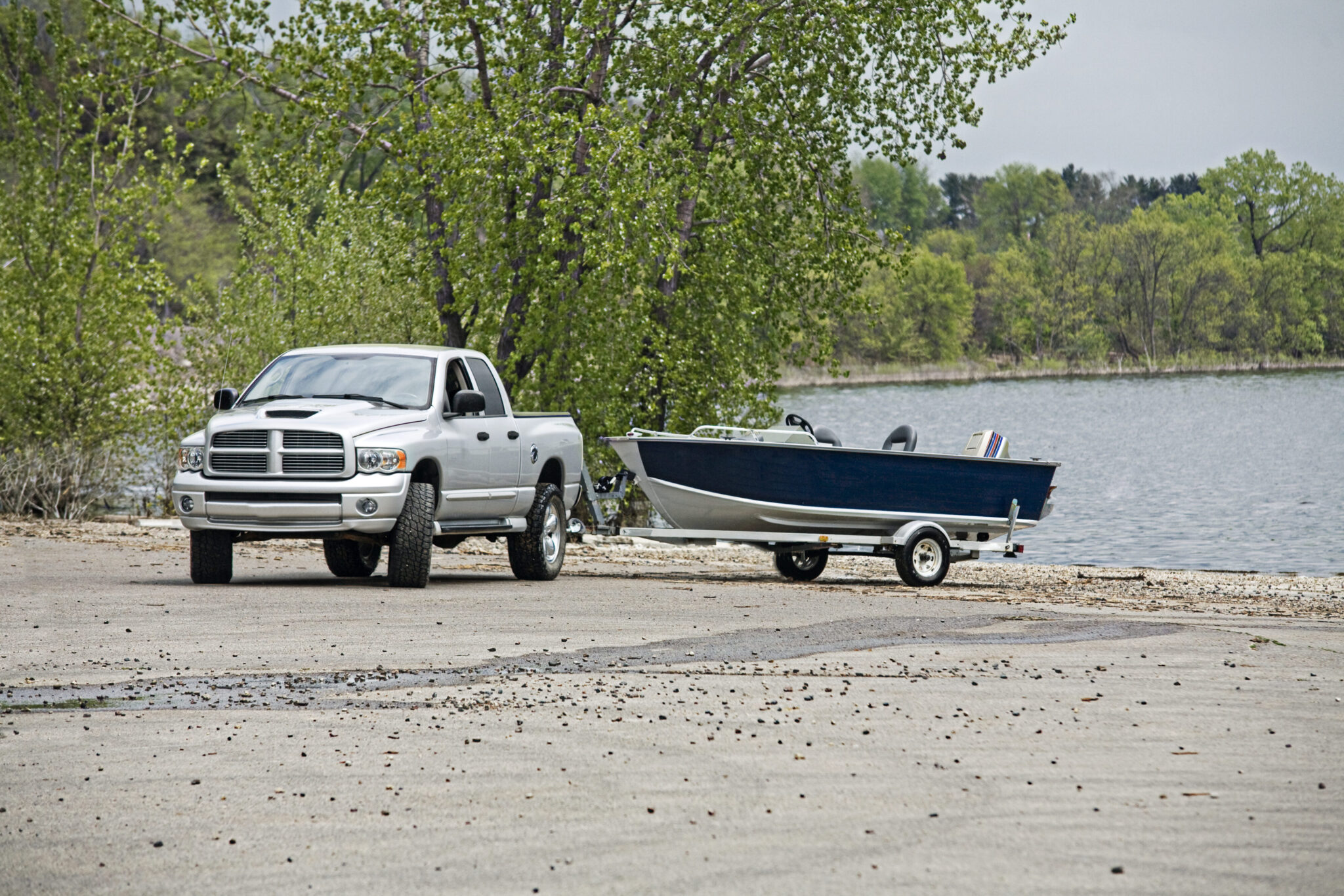Tow-behind trailers come in all shapes and sizes. From open-air utility trailers, enclosed tool trailers, and compact pop-up campers to large travel trailers–the list goes on. While there may be endless safety factors to consider when operating a vehicle with a trailer, we have compiled some important safety points to know before you hit the road with your trailer. 
Proper Load Placement – Roughly 60% – 70% of the total weight of the trailered load should be placed in the front of the trailer, closest to the tow vehicle, and front of the trailer axle. This will help keep the trailer pulling straight and fight against excessive trailer sway caused by wind, driving corrections, or other vehicles passing by. Remember to secure your load using appropriate tie-downs to prevent the load from shifting or falling out during travel.
Clearances – Be aware of the maximum height of your trailer and the maximum height of the load you are transporting once secured to your trailer. Before attempting to drive under bridges, signs, or other overarching structures, it is essential to confirm your clearance to avoid an accident.
Attachment/Hookup – Ensure the trailer hitch is fully seated on the ball and locked down to prevent accidentally disconnecting while in use. Remember to connect the wiring harness for lights, confirm that your lights are working, and always attach safety chains crossed under the trailer tongue in a manner that prevents them from dragging.
Don’t Drag – Once the trailer is connected to the vehicle, perform a walkaround to ensure there is nothing that will be dragging on the ground that could create a safety issue for you or other motorists (Chains, ratchet strap tails, ropes, load components, wiring harnesses, etc.)
Don’t Spill – If towing an open trailer, be mindful to prevent any part of your load from spilling out of the trailer onto the roadway or from overhanging over the sides that would create a hazard for vehicles passing by.
Servicing – Make sure your trailer is in good working condition. Just like a vehicle, it’s important to have it serviced regularly, including wheels, axles, lights, hitch points, ramps, attachments, and any other functional items to ensure they are working correctly.
Use Flags – Use bright/neon orange flags or tape to clearly mark the ends of any load components that overextend the rear of the trailer. Avoid allowing a load to overextend the sides; it can create a major road hazard with the potential to strike other vehicles passing by.
Wheel Chocks – Always place wheel chocks in front of and behind trailer wheels when connecting or disconnecting a trailer to or from a vehicle. It’s also imperative to use wheel chocks on the trailer wheels when loading or unloading drivable equipment to prevent unexpected movement of the trailer, which could cause a hazardous situation. Never load or unload equipment on a trailer while disconnected from the tow vehicle or on a slope.
Towing Capacity and Weight Limits – It is important to know your trailers’ weight and load capacity limits as well as that of your vehicle. All this information should be available on the VIN sticker on the trailer, and your vehicle’s Gross Vehicle Weight Rating can be found on a sticker inside the driver’s side door frame.
Driving Tips
- Drive Slow – When pulling a trailer, drive slower than you normally would without a trailer. This will help reduce the need for sudden corrections and increase decision time – especially in inclement weather.
- Brake Early – It takes longer to stop when pulling a trailer because of the additional weight, so brake early and keep extra distance between you and the vehicle in front of you.
- Turn Wide – With a trailer attached, you won’t be able to turn with as much ease as you do with just your vehicle. Be sure to give yourself space to take wider turns.
- Backing Safety – Small, steady steering adjustments are critical when backing a trailer; once the back of the trailer starts to turn, it can jackknife quickly! Place one steering hand at the 6 o’clock position of the steering wheel, and the back of the trailer will go in the direction you turn that hand. Always use a ground spotter to help if possible—they will eliminate your blind spots and keep others at a distance while backing.
- Know your Vehicle – Many automatic trucks and SUVs have a tow/haul button that assists with gear shifting to compensate for road grade changes with the added weight of a trailer. Read your vehicle’s manual and utilize this button when appropriate.